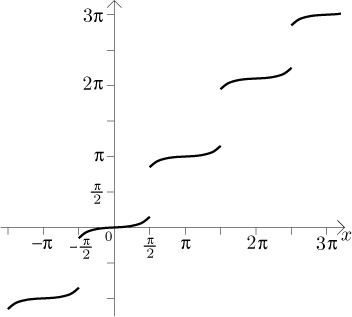We apply the same procedure that we used to obtain the definite integral. We
will try to create a continuous function H by connecting
"pieces" of
the function F, which will be on each interval
![]() shifted exactly so that the pieces fit at points
shifted exactly so that the pieces fit at points
![]() .
.
An easy calculation yields

We see that the size of the jump is always the same. Here is how F looks like:

At each node
![]()

which is the desired antiderivative on the whole real line. This is proved in
the same way as we did earlier with G at the point
![]() .
.